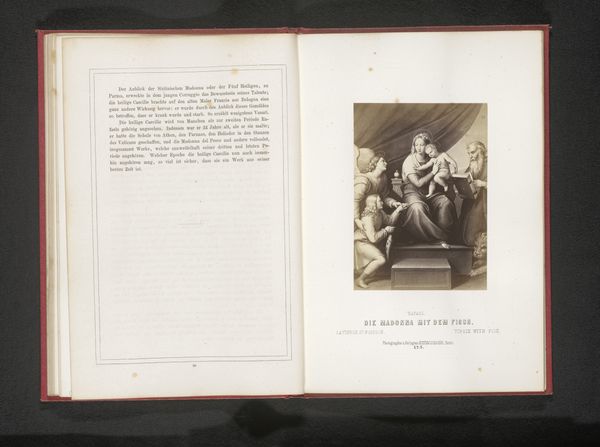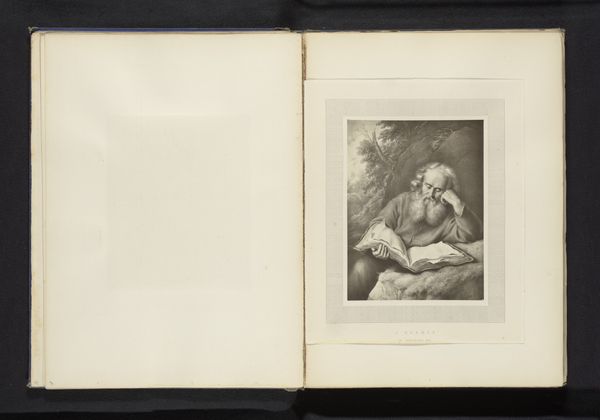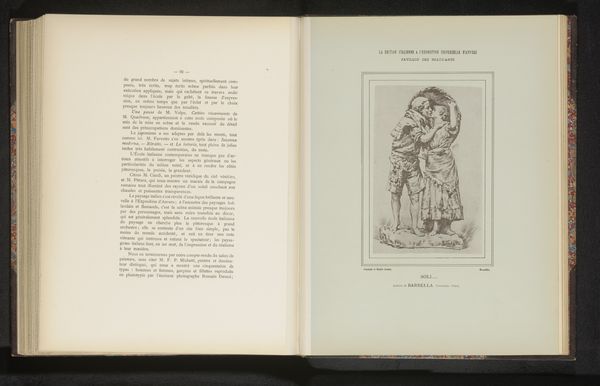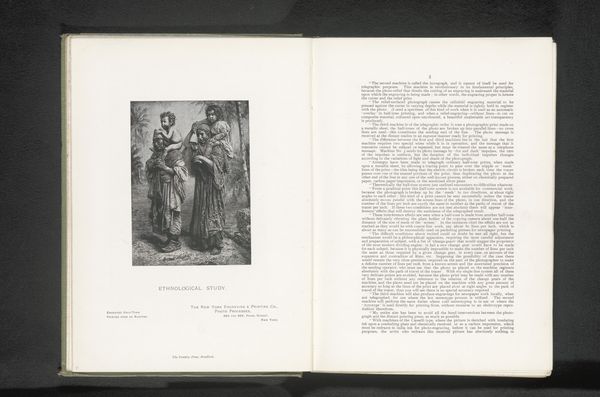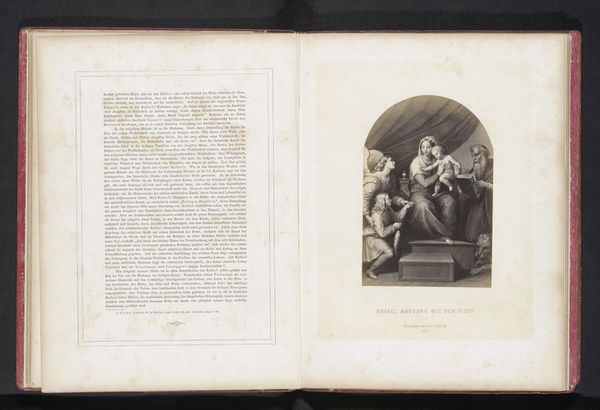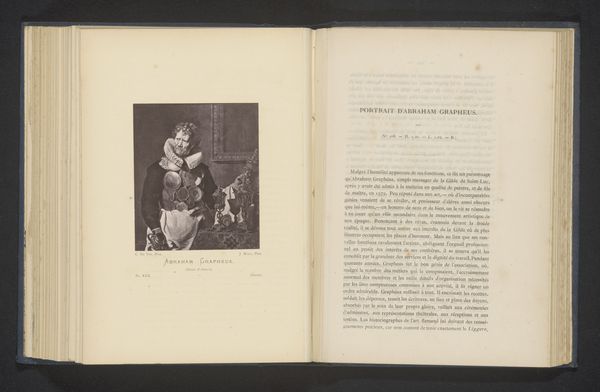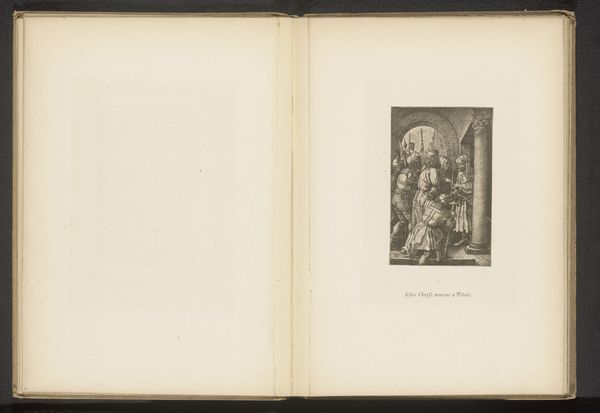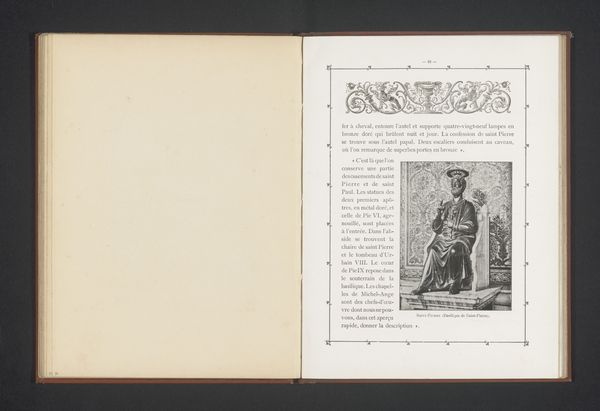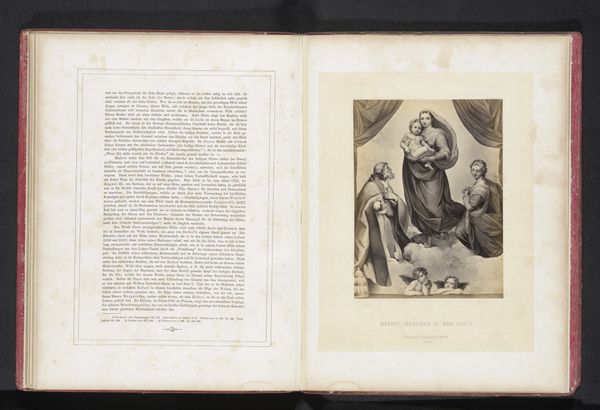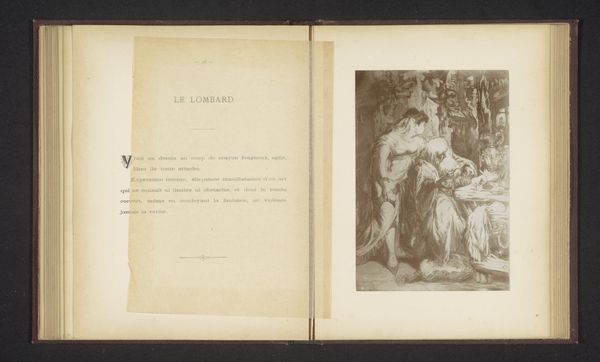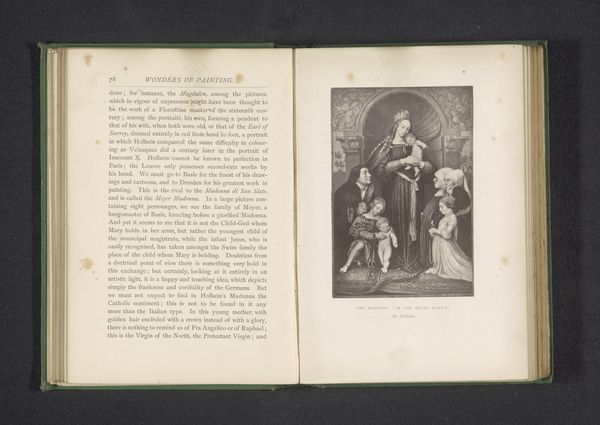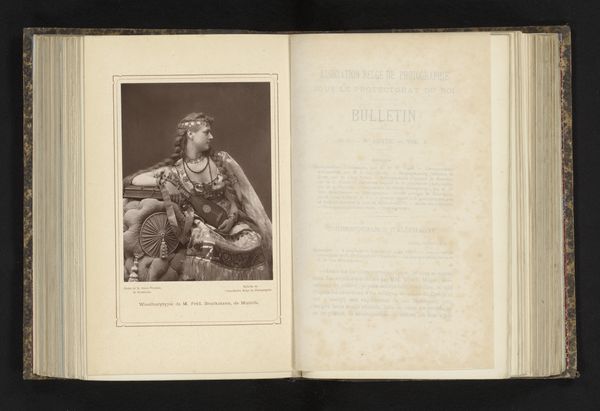
Dimensions: height 140 mm, width 120 mm
Copyright: Rijks Museum: Open Domain
Editor: Here we have "Reproduction of a print of Venus and Amor," dating from before 1898, made by H. Reymond. The Baroque style is apparent. The figures are rendered in shades of brown and cream in the engraving technique, the embrace looking tender. What is your interpretation of it? Curator: This piece resonates with the socio-political forces at play during its time. The reproduction itself speaks to a desire to democratize access to classical art, making these images available beyond the elite circles. It highlights a fascination with the art of the past while reflecting on shifting social values around the public role of art. How might its display within the pages of a book shape the experience for the viewer? Editor: That’s an insightful observation. So, instead of seeing this print on a wall in a museum, it exists here as part of a larger book, accessible at home. Does that affect its message or impact? Curator: Absolutely. The intimacy of encountering this image within a book alters its consumption. It transitions from a public display of artistic skill or status symbol to a private moment of reflection. Considering that art history books shape our collective understanding of masterpieces, how does its role shift when integrated into broader narratives about art? Editor: So the artwork not only carries the original artist’s message but also communicates information on the values and the public role of art. That really adds another layer of significance. Curator: Exactly! The work gains in context by existing in that printed context, shaped by particular socio-historical narratives. The choice of reproducing it, and how and where it’s disseminated speaks volumes. It's less about pure aesthetics and more about the dialogue the work creates within its unique historical circumstances. Editor: This discussion changed my perspective! I initially saw a tender portrait but I now see a piece in active communication. Curator: Indeed. Art gains in richness when we look beyond the surface and connect it with how social and cultural forces shaped its existence and continue to do so!
Comments
No comments
Be the first to comment and join the conversation on the ultimate creative platform.
